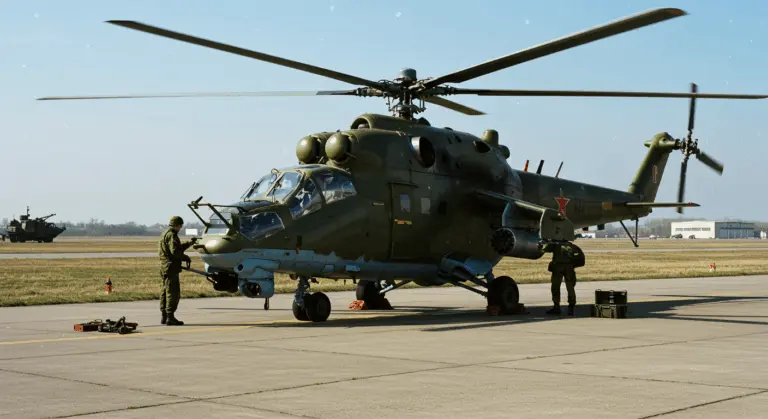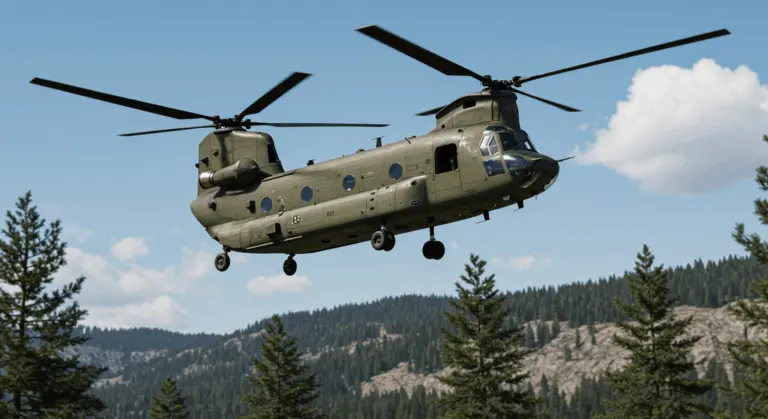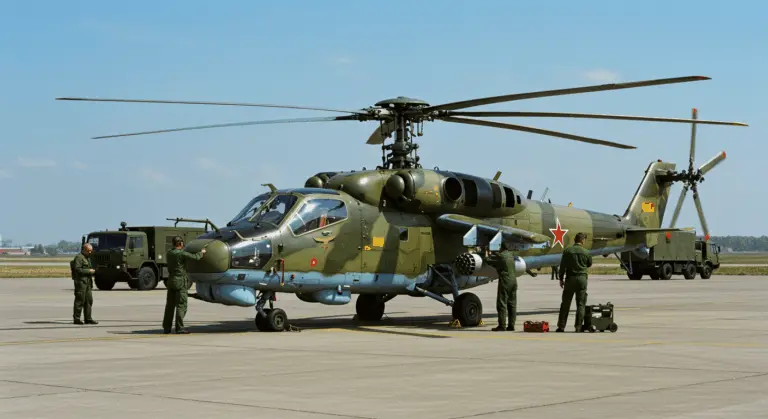Overview of the AH-1 Cobra Helicopter
The Bell AH-1 Cobra—affectionately dubbed the Huey Cobra or Snake—remains an iconic attack helicopter from the legendary Huey family, pioneering the very concept of dedicated aerial combat platforms.
Taking to the skies for the first time on September 7, 1965, the Cobra earned its reputation during the Vietnam War. It established an entirely new category of combat rotorcraft, fundamentally reshaping military doctrine for generations to come.
Its lasting impact is evident—even after the U.S. Army transitioned to the formidable AH-64 Apache and the Marine Corps embraced the cutting-edge AH-1Z Viper, international forces continue operating this proven aircraft.
Development and History of the AH-1 Cobra
Meeting urgent battlefield needs during the Vietnam War, Bell’s engineers developed an innovative solution: they married the battle-proven engine, transmission, and rotor system of the UH-1 Iroquois (Huey) with an entirely new, razor-thin fuselage purpose-built for combat.
This cost-effective approach enabled the prototype’s maiden flight on September 7, 1965, with production following swiftly. The Cobra’s knife-edge profile and innovative tandem seating—gunner forward, pilot aft—became the standard design for every attack helicopter that followed.
Across the decades, the AH-1 transformed through countless upgrades and iterations. The aircraft evolved from an interim gunship into a sophisticated weapons platform bristling with advanced fire control technology.
Key Historical Events Involving the AH-1 Cobra
The AH-1 Cobra’s combat debut came during the Vietnam War, where it quickly became the U.S. Army’s premier attack helicopter. In the dense, unforgiving jungles of Southeast Asia, the Cobra excelled at delivering close air support and escorting transport helicopters through hostile territory.
Outside Vietnam, the Cobra demonstrated its adaptability across diverse theaters. It served effectively in the 1982 Lebanon War with the Israeli Air Force and proved devastating during the Iran-Iraq War, where Iranian forces wielded it extensively against enemy armor.
Design Features of the AH-1 Cobra
The AH-1 Cobra’s design philosophy represents a revolutionary approach—a dramatic departure from conventional helicopter configurations that prioritizes lethality above all else. Its most striking feature? The narrow fuselage, presenting enemies with the smallest possible target while maximizing aerodynamic efficiency.
-
Armor Plating: Protects both crew positions during combat operations.
-
Stub Wings: Serve as hard points for mounting various weapons systems, including rockets, missiles, and gun pods.
-
Chin-Mounted Turret: A recognizable feature that typically houses a minigun or grenade launcher for precise target engagement.
Contemporary variants of the AH-1—especially the Marine Corps’ formidable AH-1W Super Cobra—feature advanced technology far beyond earlier models. These advanced platforms integrate cutting-edge Night Targeting Systems (NTS) for seamless low-light operations and comprehensive survivability suites that significantly improve crew protection.
Specifications and Performance of the AH-1 Cobra
-
Crew: 2 (Pilot, Co-pilot/Gunner)
-
Length: 53 ft (16.2 m) with rotors
-
Maximum Takeoff Weight: 10,000 lb (4,535 kg)
-
Power plant: 1 × Becoming T53-L-703 turboshaft, 1,800 SHP (1,300 kW)
-
Maximum Speed: 149 knots (172 mph, 277 km/h)
-
Range: 310 NMI (357 mi, 574 km)
-
Service Ceiling: 11,400 ft (3,475 m)
The Cobra’s performance characteristics are designed for its core combat missions: close air support, anti-armor operations, and armed escort duties. Its potent combination of speed, agility, and operational range makes it effective in supporting ground forces and engaging enemy armor.
Armament Details of the AH-1 Cobra
-
Guns: A chin-mounted turret typically armed with a 7.62mm M134 Minigun or a 40mm M129 grenade launcher.
-
Rockets: Can be equipped with 2.75-inch (70 mm) Hydra 70 or 5-inch (127 mm) Zuni rockets. Modern variants can use the Advanced Precision Kill Weapon System (APKs II).
-
Missiles:
-
Anti-Tank: Early models used TOW missiles, while later variants like the AH-1W/Z are armed with AGM-114 Hellfire missiles.
-
Air-to-Air: Capable of carrying AIM-9 Sidewinder missiles for self-defense against aerial threats.
Variants of the AH-1 Cobra
The Cobra family tree has branched extensively through numerous single- and twin-engine variants:
Global Operators of the AH-1 Cobra
While the United States Army and Marine Corps were the primary historical operators, the AH-1 Cobra has been adopted by numerous military forces worldwide.
Key international operators have included:
-
Israel: Employed the Cobra extensively in various regional conflicts.
-
Iran: Continues to operate AH-1s acquired before 1979.
-
Japan: Adapted the platform for its Self-Defense Forces.
-
Jordan, Pakistan, and Turkey: Integrated the AH-1 to enhance their attack helicopter fleets.
-
The Philippines: Used the Cobra for military and security operations.
Legacy and Impact of the AH-1 Cobra
The AH-1 Cobra has left a lasting mark in military aviation history as one of the first dedicated attack helicopters. Its Vietnam War debut didn’t just introduce a new aircraft—it revolutionized aerial combat tactics and created a new category of rotary-wing aircraft designed exclusively for offensive operations.
The Cobra’s greatest influence is how it shaped every attack helicopter that followed. That distinctive tandem cockpit configuration—gunner forward, pilot aft—became the universal standard for attack helicopters worldwide. The iconic chin-mounted turret that gave the Cobra its predatory profile? Now a hallmark feature across countless successor platforms.
The Cobra’s operational triumphs fundamentally reshaped global military doctrine for attack helicopters. Lessons learned from its decades of service became the blueprint for combat tactics and profoundly influenced its successors. Today, the AH-1’s legacy lives on through the modernized AH-1Z Viper—proof of the original design’s enduring effectiveness.




